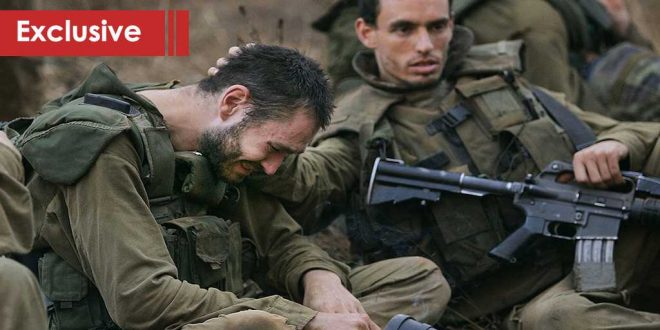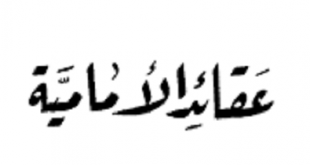Darko Lazar
The appearance of cracks in the “Israeli” military’s armor can be traced back to the 1980’s with the birth of popular resistance to its invasion of Lebanon.
By 2006, its aura of invincibility was shattered as Hezbollah defeated ‘one of the world’s strongest armies’ forever altering the region’s geopolitical landscape.
In today’s brave new world, scandals and stories about dysfunctionality within the ranks of the “Israeli” armed forces are so commonplace that most barley make the news.
But the unmasking of the army’s lack of preparedness for war – by one of its own no less– is still a dagger through the heart for officials in Tel Aviv.
So when the “Israeli” military’s ombudsman Yitzhak Brick published his scathing annual report in June of this year, it sent shockwaves through an establishment already accustomed to being shocked.
Shortages, incompetence & a pile of trash
Brick’s report, which concludes that “Israel” is not prepared for any future military confrontation, also throws the spotlight on the sheer level of incompetence among “Israeli” soldiers and their “mediocre officers” who routinely betray their position by using WhatsApp.
Moreover, it points to the lack of equipment fit for operational use, the grave shortages of medical staff and doctors as well as serious manpower shortfalls especially in combat units.
These revelations turned the once ‘hero’ of the “Israeli” army into a pariah virtually overnight.
While his findings made their way into the “Israeli” Knesset for debate, Brick’s fellow generals accused him of concerning himself with matters outside his jurisdiction and attempted to downplay the whole affair.
Testifying to just how deeply troubled the “Israeli” military has become by Brick’s remarks is a document authored this week by its Chief of Staff Gadi Eizenkot.
In it, Eizenkot tells “Israeli” cabinet ministers and members of the Knesset Foreign Affairs and Defense Committee that his army is “at a high level of preparedness and readiness for war” – even though no one was asking.
Although Eizenkot never mentions Brick’s report, the ombudsman’s recent criticism has clearly struck a raw nerve within the “Israeli” military establishment.
To make matters worse, Brick, who took part in just about every invasion launched by Tel Aviv, cannot exactly be dismissed as a traitor or as being inexperienced.
He could not be punished either because his retirement is just a few short months away.
But Gadi Eizenkot’s troubles and those of his generals don’t end there.
Shortly after the publication of Brick’s findings, the “Israeli” portal MIGnews began circulating reactions from anonymous “Israeli” officers who wholeheartedly backed the report’s conclusions.
“Nothing is allowed to be criticized, nor is it permitted to speak openly about existing problems,” the site quoted one of the Israeli brigadier commanders as saying.
“The generals are exchanging presentations that show how everything is wonderful, which has nothing to do with the reality,” he added. “We have been transformed into a pile of trash.”
According to the highly accurate Global Firepower (GFP) ranking system, the “Israeli” military is not exactly a “pile of trash” just yet but it is slipping in the rankings.
The GFP, which provides a unique analytical display of data concerning 136 modern armies, ranks each one in accordance with their potential war-making capabilities on land, sea and in the air.
Although the focus is on conventional weapons, armies known to have nuclear capabilities are automatically given a few extra points, inferring that the Israeli military is in even worse shape than the ranking suggests.
In 2014, GFP ranked Israel in 11th place. This year, it is 16th.
The GFP’s data, although slightly different in nature than Brick’s findings, also exposes the “Israeli” army’s shortcomings.
In examining “Israel’s” financial health, GFP notes that Tel Aviv’s whopping USD 20,000,000,000 defense budget is only eclipsed by its USD 93,020,000,000 external debt.
Meanwhile, “Israel’s” availability of natural recourses – petroleum being the lifeline of any war – would have a tough time meeting the needs of the military during a protracted conflict, given that the current consumption stands at a staggering 240,000 bbl/dy.
And then there is the sheer size of the military – 170, 000 active personnel and 445,000 reservists.
Experts maintain that large armies require a constant state of war in order to evolve and guarantee their superiority. Unfortunately for the “Israeli” forces, running around the occupied West Bank and shooting unarmed teenagers does not exactly qualify as a fine display in exemplary warfare.
No cause left to fight for
Last month and just a few short weeks after the unveiling of Brick’s report, Gadi Eizenkot was eager to show off his army’s capabilities during massive drills simulating war with Hezbollah.
“There has been incredible progress in our abilities. If you look at 150 kilometers around us, you will not find a brigade or corps as strong as these,” he barged to the “Jerusalem Post” at the time.
The exercises, which came exactly 12 years after “Israel” and Hezbollah fought their last war, only helped to fuel speculation over a possible Israeli attack.
However, the drills, much like Eizenkot’s rhetoric, are more likely aimed at polishing the “Israeli” military’s image rather than signs of an ill-prepared army gearing up for war.
Of course, Tel Aviv could always resort to an attack in the hope of proving that it is still the regional superpower. But given the current state of affairs, such military adventures are sure to end in disaster.
It was perhaps Hezbollah’s Secretary General His Eminence Sayyed Hassan Nasrallah who said it best.
“Today we find through studies circulated in the ‘Israeli’ media that the real crisis in the ‘Israeli’ army comes from the human element,” Sayyed Nasrallah said in a speech last month.
“The ‘Israeli’ youth prefer to go to non-combat units because they lack motivation and their sense of sacrifice is disappearing. There is no longer a cause they believe in and are ready to fight for,” he added. “Our strength is here in these generations of our sincere and loyal youth who are ready to sacrifice.”
 WILAYAH NEWS VOICE OF THE GLOBAL AWAKENING
WILAYAH NEWS VOICE OF THE GLOBAL AWAKENING






